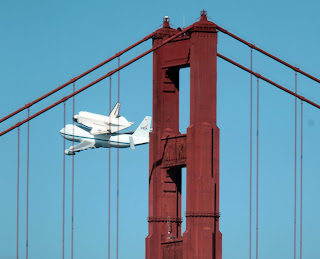A Song of Fire and Ice
As you might guess from the image, this post is not about the George RR Martin fantasy - a work that ought to be right in my wheelhouse, but with which I have had only a glancing encounter.*
The subject is, instead, the planet Mercury, the latest subject of exploration news from NASA. And unlike our previous exciting episode, which - alas! - turned out to be exiguous, this finding seems more solidly grounded. Sky & Telescope, which notably avoided the 'earthshaking' Mars story**, unabashedly reported the Mercury news.
After all, there is less impulse toward hype: People have not spent the last hundred years breathlessly speculating about ice on Mercury.
In fact, for about half of that hundred years, Mars was believed to be fully tide-locked, and ice on the eternal-night side would not have been all that surprising. Even so, the whole idea of ice on Mercury evokes the proverbial snowball's chance in Hell, and all that. Even though Venus turned out to be the Solar System's real hell.
Mercury did not get much love from rocketpunk-era SF. A quick google shows that Asimov went there, disguised as 'Paul French,' in Lucky Starr and the Big Sun of Mercury. I probably read it, but do not remember it. Asimov's strengths, unlike Heinlein's, did not lend themselves to juvenile fiction.
If Clarke or Heinlein ever went there, I blinked and missed the trip. Mostly I just remember throwaway mentions of bases or outposts on Mercury.
The problem with Mercury, in SF and for actual human exploration, is not so much its surface conditions, which can fairly be called challenging, nor the fairly steep orbit required to get there. It is the problem of that Big Sun, blazing with ever-greater intensity as you drop toward Mercury's orbit.
The Messenger spacecraft uses a sunshade for protection, and human missions would certainly do the same. Deploying the sunshade is probably easier than they imagined in rocketpunk days, and shouldn't require spacewalks. This is good. But of course if deployment fails for any reason, things will get terminally unpleasant on board.
One good point about going to Mercury is that solar electric power does just fine - and in fact could have about ten times the acceleration in Mercury space that it does at 1 AU.
The combination of plentiful ice - a quantity of H2O reportedly somewhere between Lake Tahoe and Lake Erie - and very plentiful insolation invites speculation about an industrial future for Mercury. Mercury's high density also suggests that heavier elements are plentiful, perhaps even near the surface.
Of course I am going to pour cold water on that. (If in shadow it will freeze into ice; otherwise it will boil away.)
Going to Mercury will be difficult, and therefore expensive. Going there cheaply, on a large enough scale for significant industrialization, will take orders of magnitude of technical progress. And with that level of progress we might not need to mine stuff on Mercury anyway.
We may not go to Mercury at all, in person that is, at any rate not in the midfuture. It may simply be easier and a lot safer to explore robotically.
On the other hand, I do not expect that the human presence in the Solar System will develop the way people imagined in the 1950s. Mercury could turn out to have more of interest than worlds we imagined as more promising, and turn out to be a thriving center of activity in a few hundred years.
* My two off-putting grumps about that other Song of Fire and Ice:
Stark and Lannister. I have no problem with riffing off real history, but the noble houses of York and Lancaster are not, shall we say, associated with a successful politics. This of course is no bar to successful fiction - it certainly didn't stop Shakespeare. But I will stick with the equally lurid and much more effective Tudors (or even pseudo-Tudors), thank you very much.
Winter is Coming. The motto of the noble Starks translates as Darker and Edgier. Again, thanks but no thanks.
** As it turns out, Curiosity has found 'simple organic compounds.' Alas, they were probably cooked up by the SAM experiment's chemical oven.
Discuss:
(Planets and books are both fair game here.)
The image comes from a website called, accurately if not imaginatively, planetsofthesolarsystem.net.
















